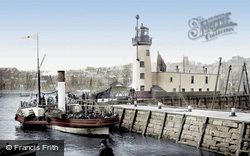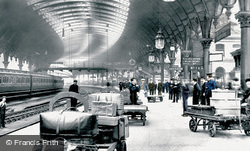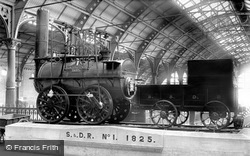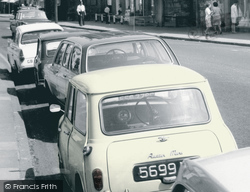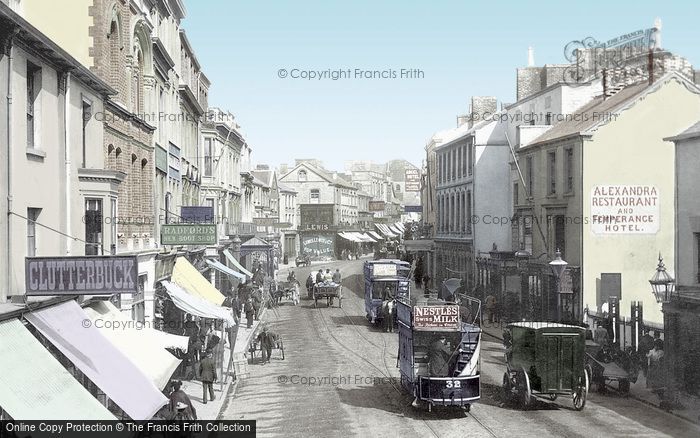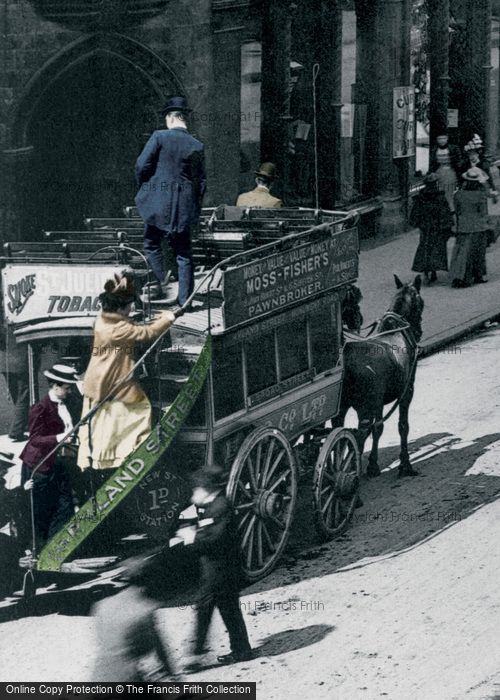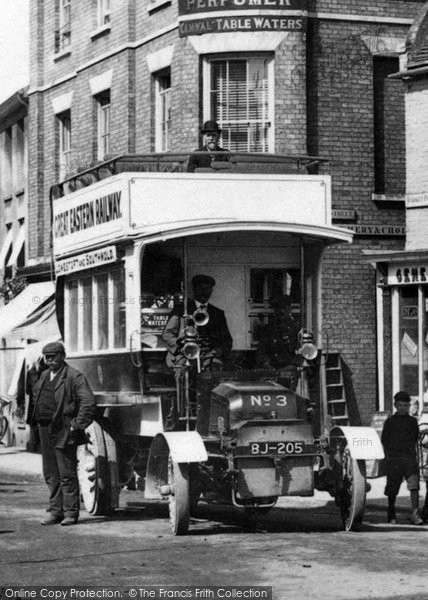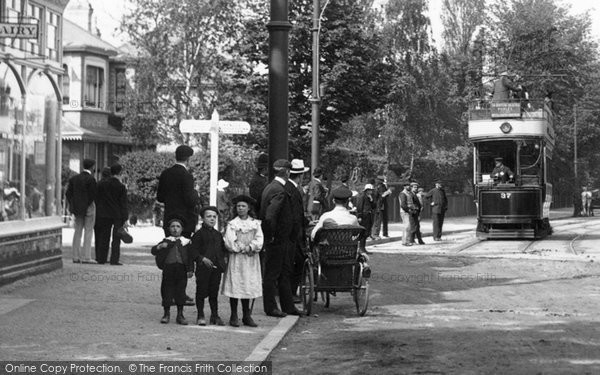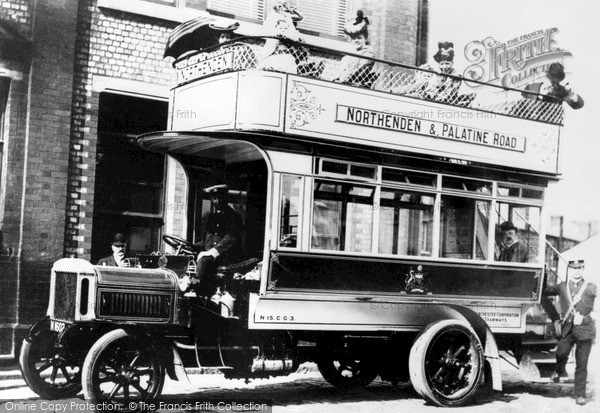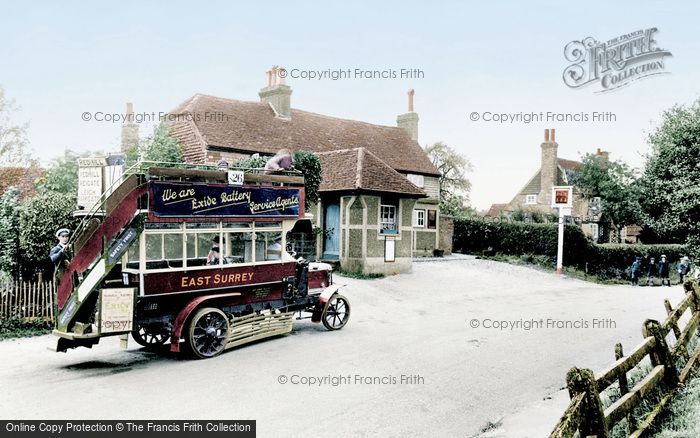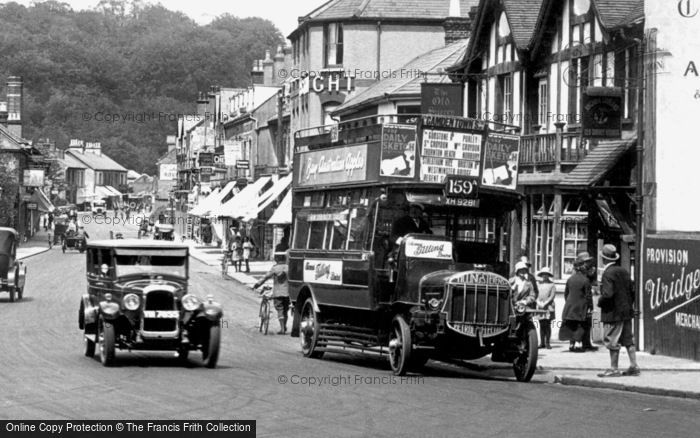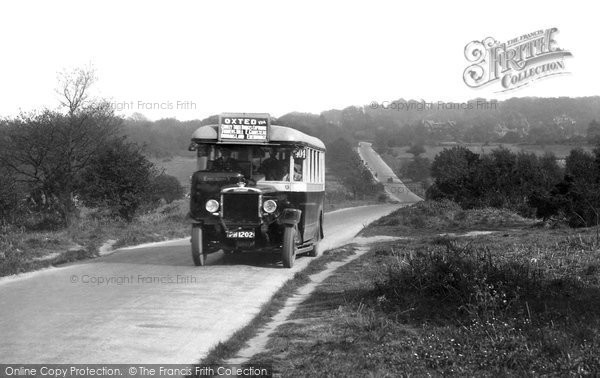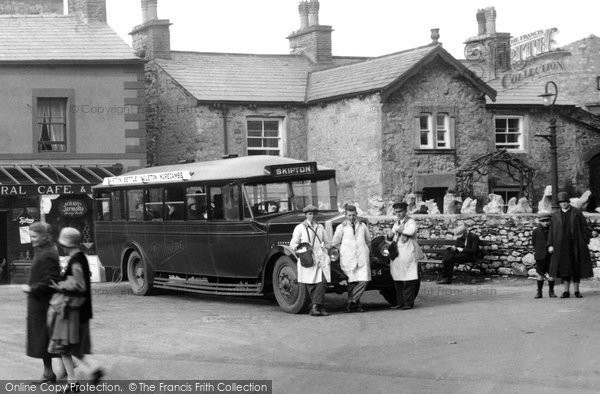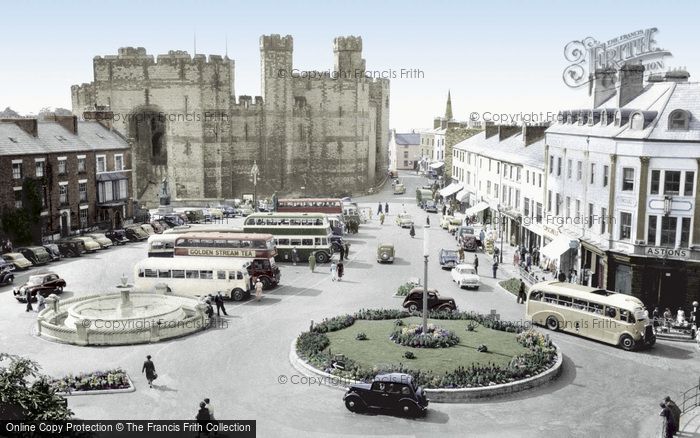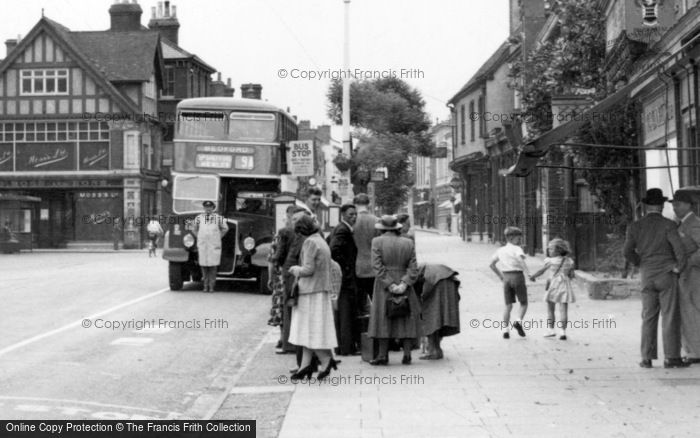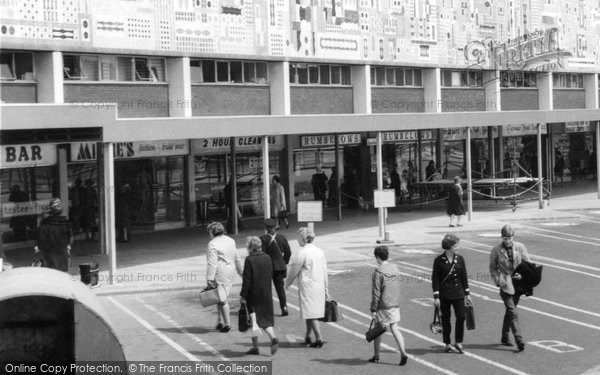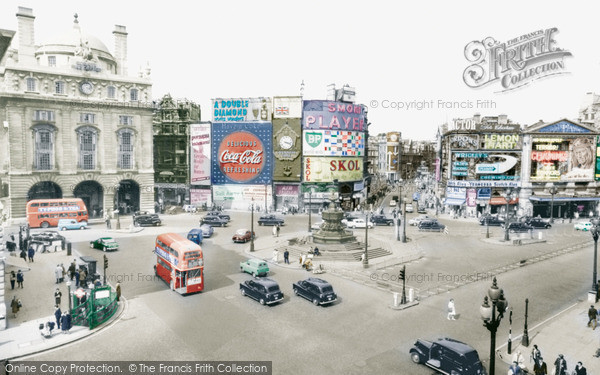On the buses
Published on
March 16th, 2017
There was a young girl, a sweet lamb,
Who smiled as she entered a tram.
After she had embarked
The conductor remarked:
"Your fare!" And she said, "Yes, I am." - Anonymous
From the horse-drawn omnibus, to motorised trams to shiny double-deckers, buses have long-since been a transportation lifeline. Here is a special selection of nostalgic photographs from the Frith archive spanning 1893 to 1960 of the wonderful bus!
Here we see the open-top trams of the High Street to Morriston and Cwmbwrla service in Swansea, which were horse-drawn until the turn of the 19th century.
It cost one penny to travel the length of New Street by horse-drawn omnibus, while a Hansom cab cost somewhat more. Cab fares were regulated by the council: a Hansom cost one shilling for the first mile, each additional half-mile costing 4d.They could also be hired by the hour at 2s 6d for the first hour and 6d for each additional quarter hour. The Hansom was designed by J A Hansom, the architect of the Town Hall.
A Great Eastern Railway bus waits for passengers. The Southwold narrow gauge railway opened in 1879 and lnked the town to Halesworth and the main railway network.
From a single tram route of a couple of miles in length in 1877, Manchester’s tram network had over 20 miles of track by the end of 1881. Though the Corporation built, owned and maintained the tramway, the running of services was leased to the Manchester Suburban Tramways Co who paid between £300 and £450 a year per track mile.
A signboard on this picturesque open-topped bus outside the Six Bells pub at Newdigate in Surrey states that it is the number 26, calling at Redhill, Reigate, Leigh and Parkgate.
The bus takes pride of place in this bustling Croydon Road scene from the 1920s. The view, taken from what is now a roundabout looking towards London, is surprisingly little changed.
This is the sort of local bus service which for decades has provided a vital lifeline for dwellers in rural areas all over Britain.
Just six years earlier than the date of this photograph, White Scar Cave, just off the road between Hawes and Ingleton, was discovered. With two waterfalls and coloured stalagmites and stalactites, the cave was an instant success with tourists, many of whom would have travelled to view the sights on a bus like this.
The great castle of Edward I overpowers this scene as, of course, it was originally intended to do, and its distinctive polygonal towers distinguish it from other castles that Edward built. Here we see the modern town square filled with buses and coaches for holidaymakers and locals alike. The fountain and the municipal flowerbed, splendid symbols of civic pride, are sadly no longer with us.
The bus station in Basildon was built to incorporate a parade of shops, seen here beneath the canopy. By the mid 1960s, dress sensibilities were changing: the young woman in Bay A is wearing a mini-skirt, whilst the man in Bay B sports narrow jeans. His companion is evidently a clippie (see her ticket-machine)—a breed that is now extinct outside metropolitan areas.
London is famous the world over for its double-decker red buses and its black taxi cabs, both of which are in evidence in this view of Piccadilly Circus in the 1960s.
Perhaps you'd like..?
If you liked our "On the buses" Blog Feature, you might like to see and follow this
Francis Frith board over on Pinterest.
Join the thousands who receive our regular doses of warming nostalgia!
Have our latest blog posts and archive news delivered directly to your
inbox.
Absolutely free. Unsubscribe anytime.



